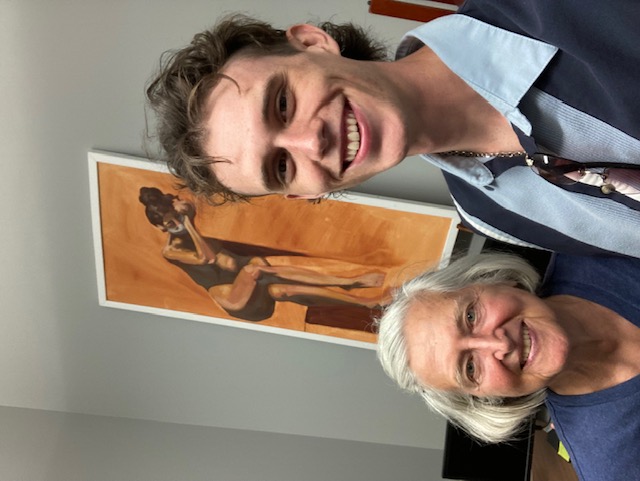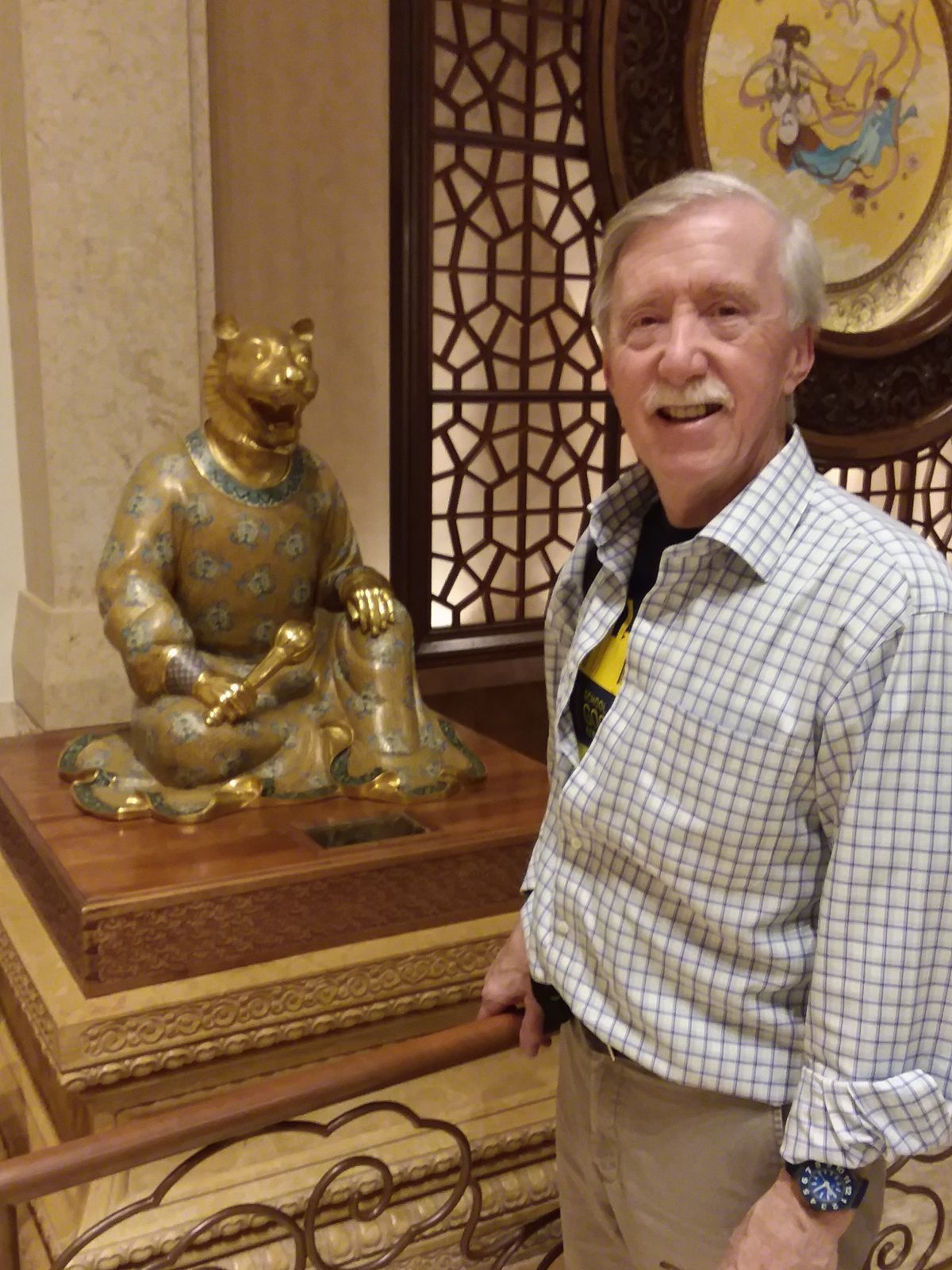
 Back to News
Faculty Excellence
|
Inside the Research
Back to News
Faculty Excellence
|
Inside the Research
Kinesiology faculty emeriti are staying busy

If you pop into the health sciences suite in the School of Kinesiology building on any given day, you will likely find Katarina Borer, sitting in her office, working on her research.
This wouldn’t be that unusual for a faculty member — except for the fact that Borer is technically retired.
She’s been a professor emerita for more than five years, although you wouldn’t know it based on the regular hours she keeps and the diligence she applies to the work she continues to do in SKB.
“In the peak of your career, you’re getting grants, you’re running your lab, you’re trying to keep up with publications,” she says. “Very often you’re so busy and you have to apply for the next grant, so some of the publications just don’t get done. And to spend so much time and money doing these studies and then not publishing them is really a crime. And the kind of research I do really has an impact on health. I think I still have good advice to give.”
Borer is one of several Kines emeritus faculty who are still actively publishing — some continuing to conduct or assist with research, others focused on textbook revisions and science-based, editorial or branded content for organizations.
“I was in academics for close to 50 years,” says professor emeritus Victor Katch, who writes a regular column called “Health Yourself” in Michigan Today. “And I fully enjoyed it. I loved almost every aspect of my job at U-M. So I found retirement to be a difficult transition.”
“I’ve learned as an academic retiree that when you leave the university, your social contacts and networks go down,” says professor emeritus Dale Ulrich. “Because I was training and interacting with lots of students, and now I’m no longer doing that on campus. But I’m very interested in staying active, even though I’m doing less than I was before.”
***

When Borer was a young girl living in Yugoslavia, her family didn’t have a lot of money for entertainment. But she remembers buying little pieces of paper. They looked like your average scraps of cellulose. If you soaked them in water, however, a picture appeared.
She analogizes her feeling of delight at the surprise image to the satisfaction she continues to get out of research.
“I get the greatest pleasure after I analyze my data,” she says, “when I discover relationships that I didn’t know when I was putting my hypothesis forward.”
Although Borer no longer has a lab at her disposal, she still has access to plenty of data that’s left over from from her time as active faculty at U-M, which lasted for more than 40 years. She’d previously published papers about how walking speed affected the bone density of postmenopausal women, but by the time she retired, she hadn’t yet written about the results from that same study around fat loss — and she still had binders of information and assays of blood samples to draw from.
Borer contacted former master’s student Jacquelyn La New, whom she’d worked with on the original study, and the pair ended up publishing a paper in the journal Nutrients that found that “total body fat is lost through walking at all speeds, but the change is more rapid, clear, and initially greater with slow walking in overweight subjects.”
“She did a lot of calculations,” Borer says of LaNew, “and so it was truly a joint affair.”
Borer also worked with another former student, Qingyun Zheng, who’d initially come from China to study under Borer as part of Zheng’s doctoral research. Once Zheng’s PhD was complete, she returned to Ann Arbor to work in a Michigan Medicine lab as a postdoctoral fellow — and then the pandemic happened.
“She couldn’t actually do much research because she needed equipment in a lab next door, which was off limits because of COVID,” Borer says. “So I said, ‘Instead of just sitting here, why don’t we write a second paper together?’”
Looking back through their old data, they concluded that postmenopausal osteoporosis in sedentary women could be prevented or mitigated by 45 minutes of morning exercise on level ground or downhill, completed shortly after a meal. Twenty minutes of exercise, they discovered, was not enough.
“I enjoy integrating things and sometimes doing little inductive leaps between things that look likely to be connected and arguing for it and so on,” Borer says.
Borer has also authored reviews about how nutrition and exercise can prevent or ameliorate obesity — papers she says were “products of my frustration.”
“Seeing the obesity rates rising like crazy, people using gastric surgery, people using these weight loss medications that don’t work perfectly, I was stimulated to write,” Borer says.
And now she’s in the midst of a one-woman case study. She believes that much of the research about intermittent fasting is being done incorrectly. But since she can’t recruit people to participate in research anymore, she’s using herself as the subject to test her theory. For a year and a half, she’s limited her food intake twice a week, going 36 hours at a time without eating more than about 100 calories.
“I think researchers are anxious about people getting super starved when they are fasting and so what they almost invariably do is modify the intermittent fasting paradigm by giving them a big meal for breakfast on fasting days,” Borer says. “When you give somebody 500 calories — and I have done this study with a doctoral student — it increases your insulin substantially for about four hours, and that means that you are not achieving a long enough period of fasting. So basically then, by doing my protocol, I’m trying to find out whether there’s a benefit to 36 hours of uninterrupted fast.”
She’s grateful for the School of Kinesiology for not only continuing to give her a space to work on the papers around these efforts but also helping her maintain a connection to the group that her life revolved around for so long.
“It provides me with a forum where I can work, where I can get support, and where I can influence exercise endocrinology being discussed periodically,” Borer says. “I have a lot of friends still there, and I go to most social events. It’s my community.”
***

In October, professor emeritus Dale Ulrich traveled to China. He was a keynote speaker at an international conference and was spending some time at East China Normal University to help graduate students and faculty with research. But one day, he also took a high-speed train to visit a kindergarten.
“Any idea how many kindergarteners they had in the building?” Ulrich asks. “A thousand. It’s an amazing complex.”
“The Chinese are putting a lot of investment into young children’s development, health, fitness, motor skills but then also cognitive development, social development, etc.,” he says. “What was amazing to me to find out was that they wanted me to train their staff because their whole motor development program for kindergartners is founded on the skills in my test.”
Decades ago, Ulrich developed a test for gross motor development. At the time (and still even today), few ways exist to clearly and easily measure such skills.
“I came from a teaching background in adaptive physical education, and the only assessment materials that existed you almost needed a PhD in psychology or educational psychology to interpret,” Ulrich says. “If that’s the case, teachers are not going to use it. Families won’t be able to interpret it. So my task as a doctoral student at Michigan State was to develop something new.”
“I could see the test as something that teachers needed to use,” he continues. “I wasn’t even thinking of research at that point. But when it became available, all of a sudden it just blossomed.”
Now in its third edition, Ulrich estimates his test is cited in research several thousand times a year. And other countries are interested in adapting it for their purposes, including, clearly, China. The Chinese government and some of the universities wanted to use the test as the basis for evaluating children’s motor skill competency and to build a preschool and early elementary curriculum around the skills that were in the test.
At East China Normal University, Ulrich worked with graduate students and faculty to shape research on the Chinese version of the test.
“I’m not doing independent research anymore,” he says. “I’m not generating the research questions, getting IRB approval, and going through the university. I’m helping other people do research that they asked me to be involved in. And that’s great.”
***

When Katch was an active professor, he didn’t limit himself to work at the School of Kinesiology. Back then, he wrote columns in magazines like Mademoiselle and Muscle & Fitness and Shape.
“I always felt as an academic that we have responsibilities not just to write research publications in scientific journals but to do translational writing in popular magazines,” Katch says. “Otherwise, a lot of this other crap that’s not science-based is what goes out to the public.”
“So I did that for many years, and I continue to do it on and off because I’m no longer at the university,” Katch, now an emeritus professor, continues.
Today, Katch’s byline is most frequently in U-M’s Michigan Today online magazine. He maintains a monthly column there called “Health Yourself” that explains scientific research at about a 10th-grade level.
“I find that a lot of fun and interesting,” Katch says. “It’s a real challenge to learn to write like that.”
Recently, he’s written articles about psychedelic sciences, acupuncture, intermittent fasting, and the concept of fun and how it relates to health.
“I get ideas from everybody,” he says. “The editor of Michigan Today or sometimes my wife. Once, I was out playing golf at the U-M course, and I hit a ball that didn’t go very far, and I said, ‘Shit, this is terrible, I’m not having fun.’ The next time I hit a ball, it was beautiful, and I said, ‘Oh, this is fun.’ So I wondered how you know you’re having fun. Is it only success? And that led to that article.”
Katch also consults and writes for various companies producing exercise, nutrition, and weight control products. These organizations ask Katch to evaluate their products and use his knowledge to write science-based content to back up their claims.
Similar to his track record of magazine writing, his history of writing content for fitness coaches like Richard Simmons, Jack LaLanne, and Jane Fonda back in the ‘80s and ‘90s allowed him to develop a reputation for that type of public-facing work.
“I’ve been easily able to bridge the gap from being an academic to the athletic world,” he says, “and it makes it very comfortable for non-academic people ‘cause I can speak their language.”
Katch does still dabble in scientific writing, mainly in the revisions of his three textbooks. A few months ago, he and his brother finished the ninth edition of their Exercise Physiology: Nutrition, Energy, and Human Performance textbook.
“Our field is expanding so rapidly,” he says. “There are more people interested in exercise and what it does to the body and how the body affects your biology. So you’ve got to read the literature and evaluate it and go section by section in the book and put research in there that’s pertinent for undergraduate and graduate students.”
He says the revision process can take anywhere from six months to a year. At 78, he’s not sure whether this will be the last time he goes through it.
But, he says, at least he’s still “much more active” than his co-authors.